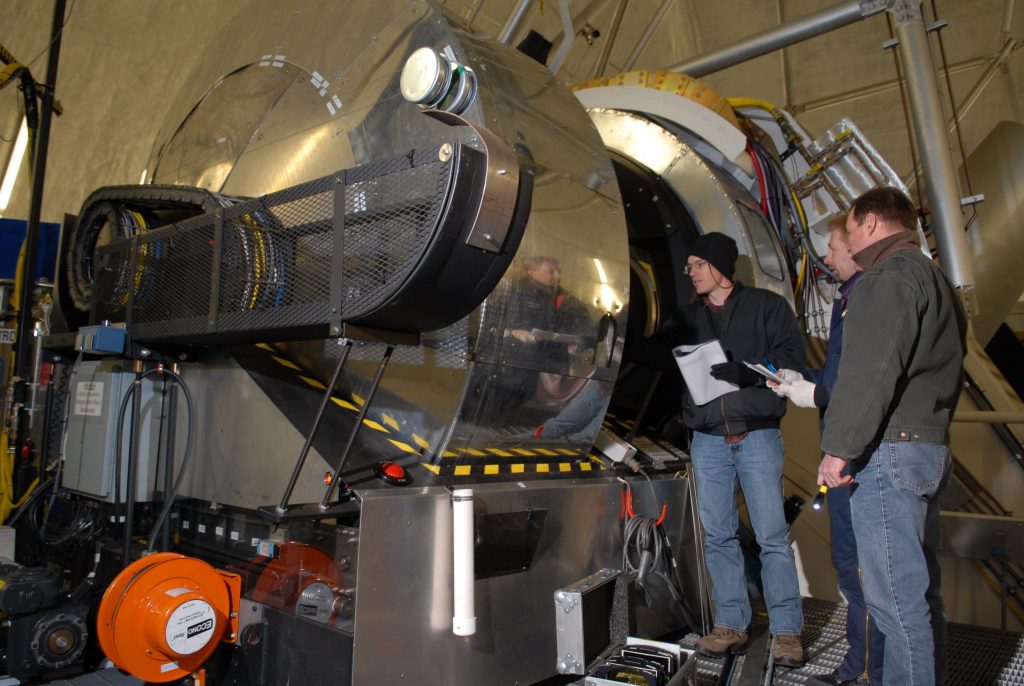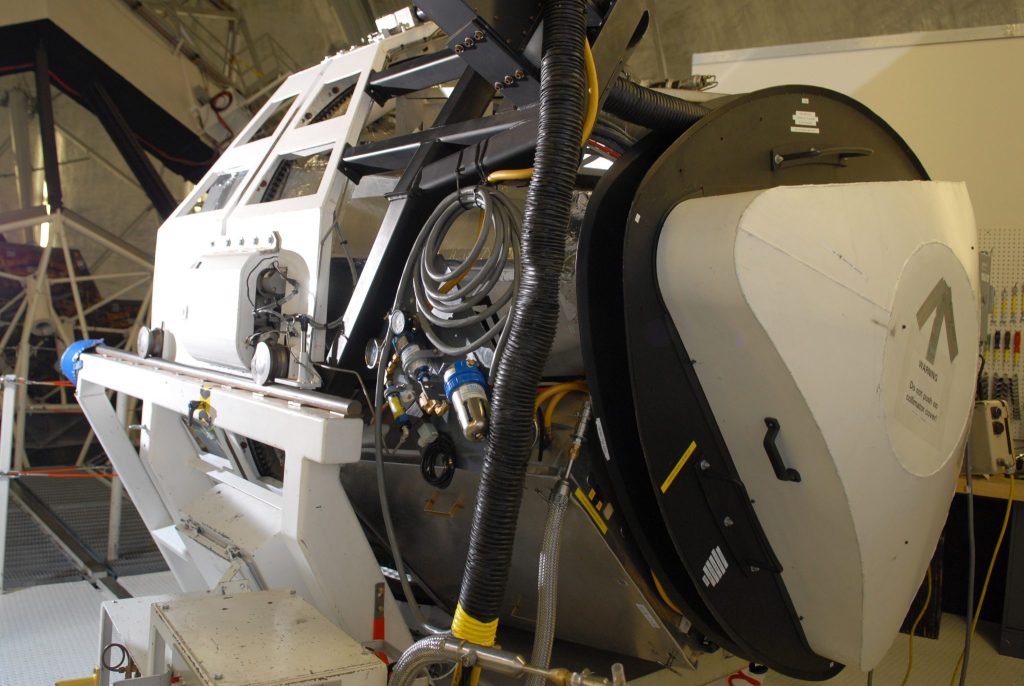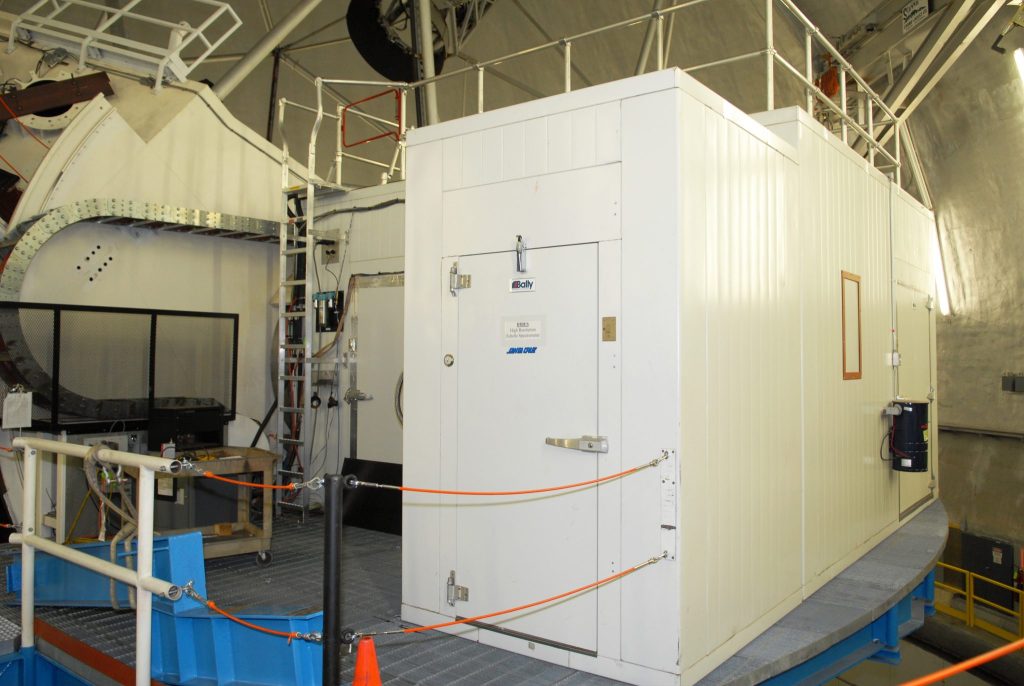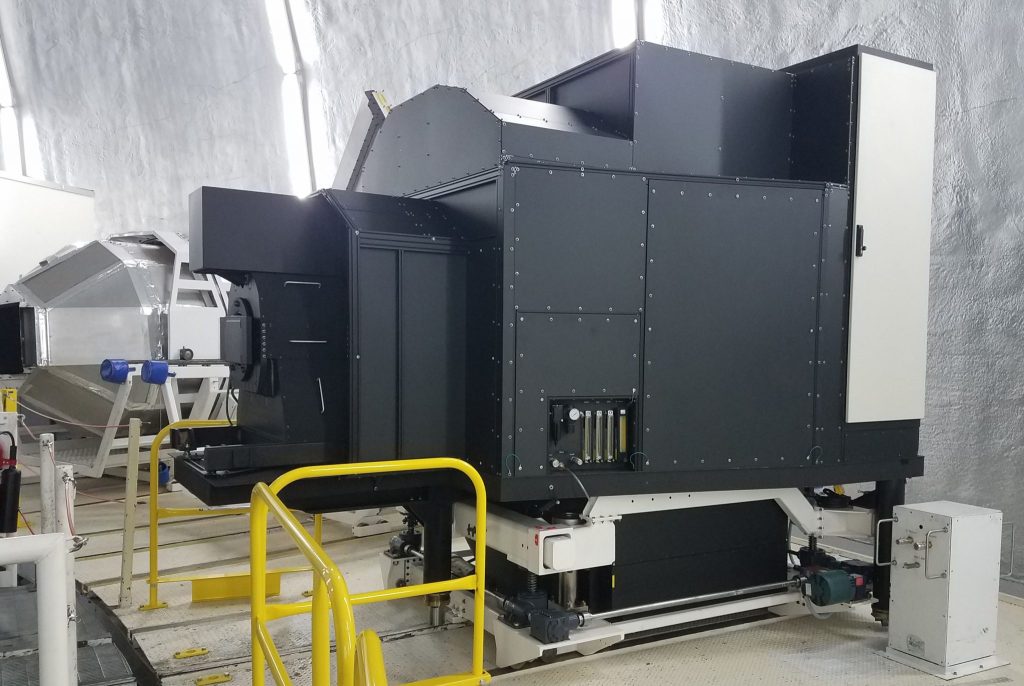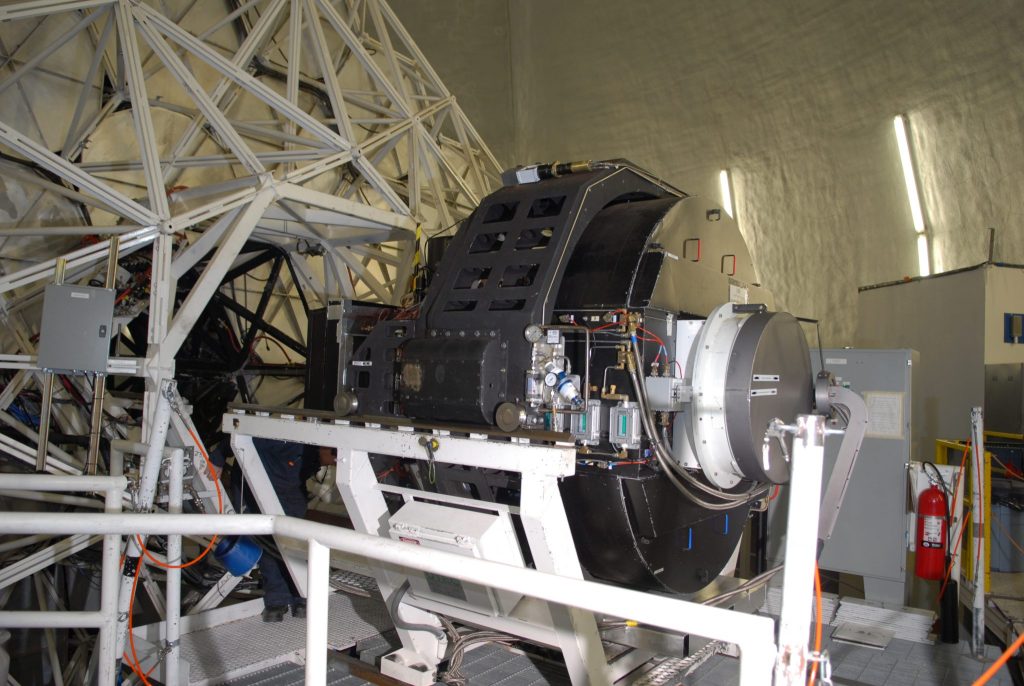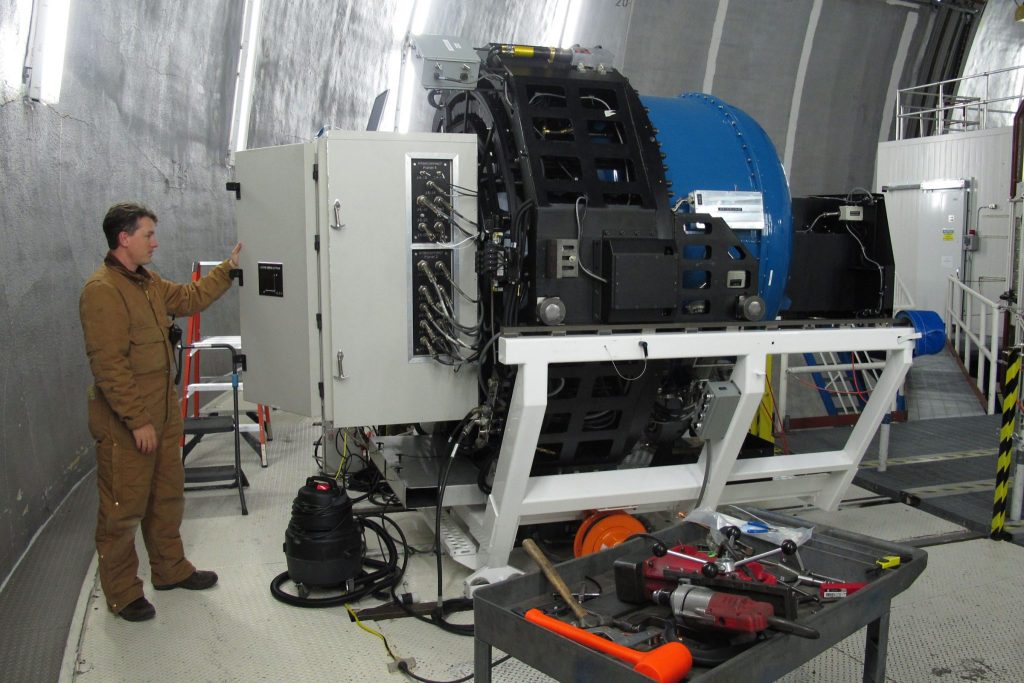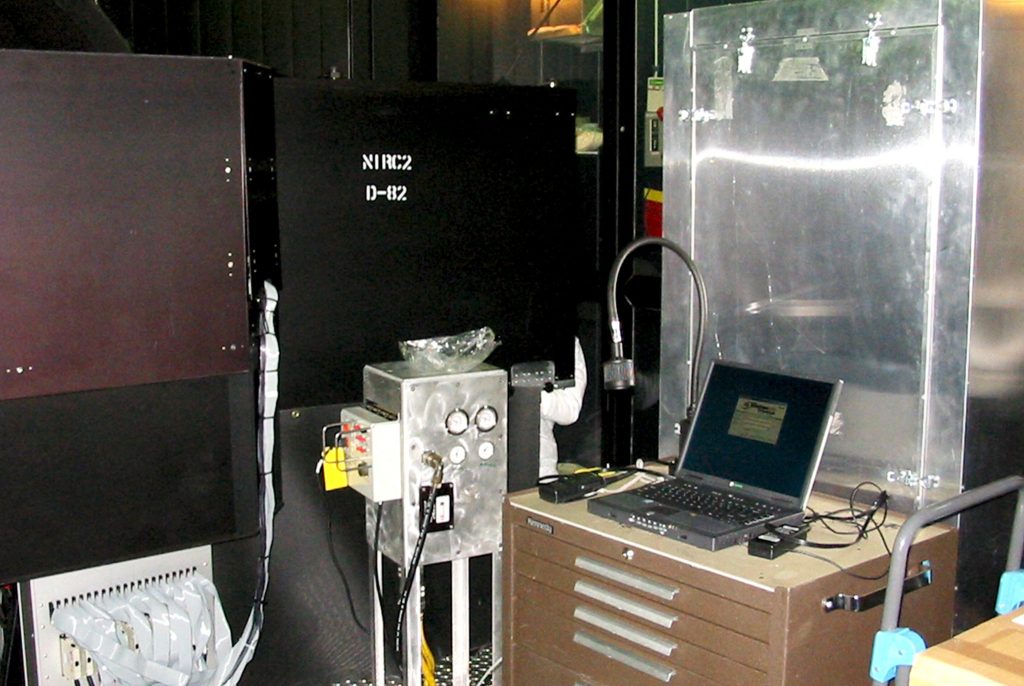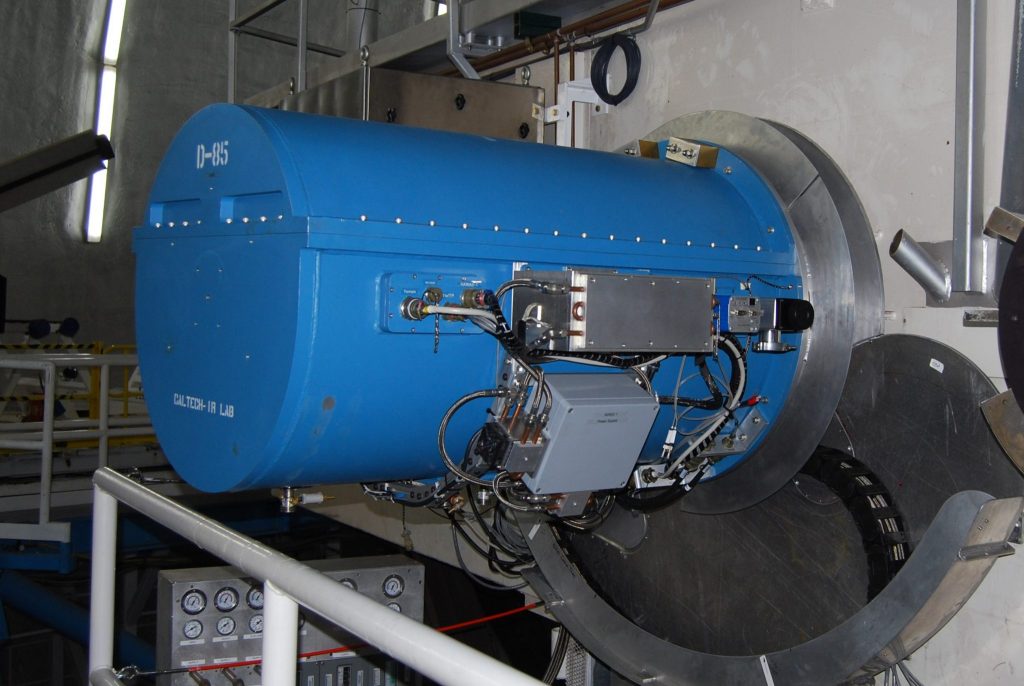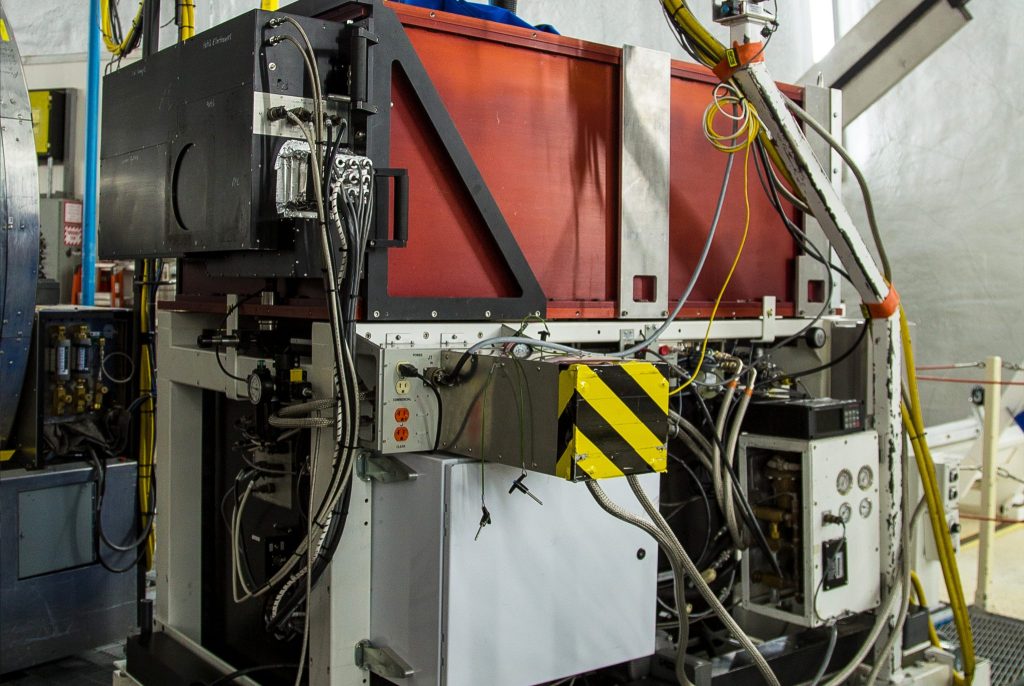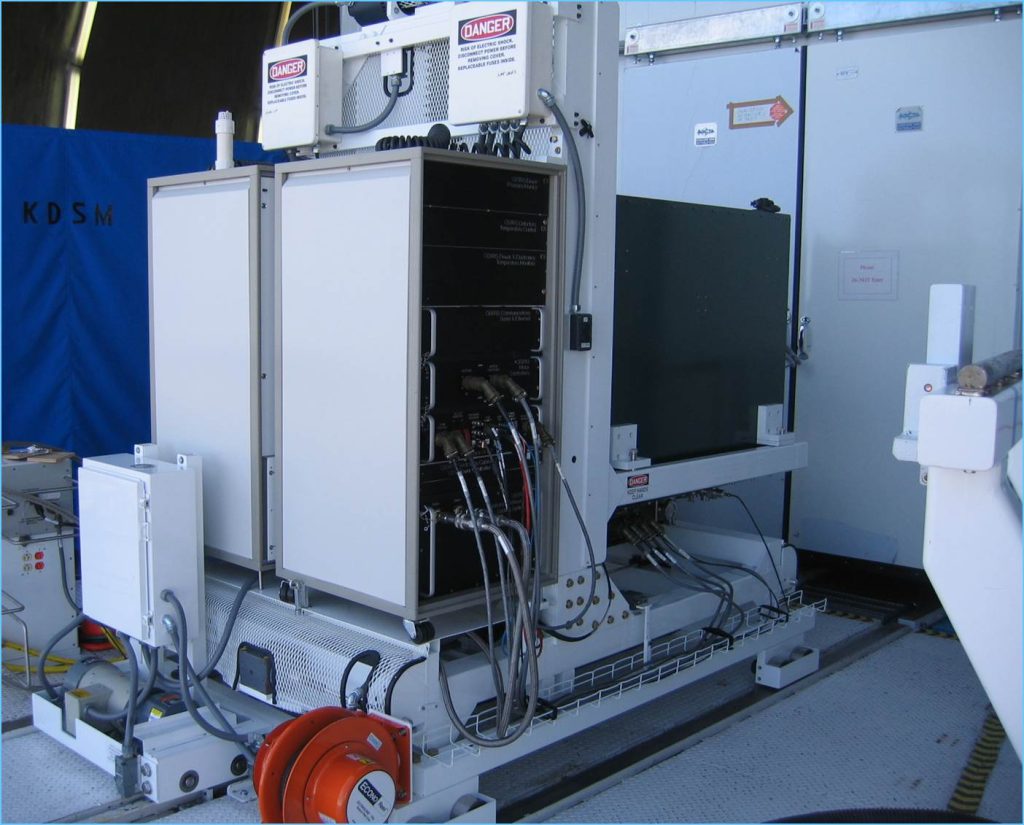Telescopes

Keck I and Keck II Telescopes
The twin W. M. Keck Observatory telescopes are the world’s most scientifically productive optical and infrared ground-based telescopes.
Each telescope operates with nanometer precision. The telescopes’ primary mirrors are 10-meters in diameter and are each composed of 36 hexagonal segments that work in concert as a single piece of reflective glass – a revolutionary design developed by the late Jerry Nelson, “Father of the Keck Observatory Telescopes,” and his team. Each segment’s surface is so smooth that if it were the width of Earth, imperfections would only be three feet high. A computer-controlled system of sensors and actuators adjust the position of each segment relative to its neighbors with an accuracy of four nanometers – about 1/25,000 the diameter of a human hair.
Observing from Majestic Maunakea
From Hawaiʻi’s dormant volcano Maunakea, astronomers around the world use Keck Observatory to observe the universe with unprecedented power and precision. Located in the middle of the Pacific Ocean, Hawaiʻi Island is surrounded by thousands of miles of thermally stable seas. The 13,796-foot Maunakea summit has no nearby mountain ranges to roil the upper atmosphere. Few city lights pollute Hawaiian night skies, and for most of the year, the atmosphere above Maunakea is clear, calm, and dry – offering the best seeing on Earth. We wish to recognize and acknowledge the very significant cultural role and reverence that Maunakea has always had within the Native Hawaiian community. We are most fortunate to have the opportunity to conduct observations from this mountain.


Reducing Atmospheric Interference with Adaptive Optics
Although Keck Observatory’s telescopes offer the greatest potential sensitivity and clarity, their performance, including the performance of all ground-based telescopes, are limited by the Earth’s atmosphere, which distorts astronomical images. Keck Observatory’s scientists and engineers have learned to remove the effects of atmospheric blurring using adaptive optics (AO).
AO measures and then corrects atmospheric turbulence using a deformable mirror that changes shape 2,000 times per second. In 1999, the Keck II telescope became the very first large telescope worldwide to develop and install an AO system. This innovative technology now routinely produces images with greater crispness and detail in the near-infrared than the Hubble Space Telescope.
Meet the Instruments
A telescope is only as productive as its instruments, just as lenses are to a camera. To maximize the scientific productivity of the two largest light collecting mirrors on the planet, the Keck I and Keck II telescopes host a suite of state-of-the-art observing instruments designed to adapt to changes in the ever-evolving field of astronomy.
Upcoming Instruments
New developments in instrumental technology are a key component in our mission. The Keck Planet Finder (KPF), debuting in 2023, will be the most advanced spectrometer of its kind in the world. This next-generation optical spectrometer will discover and characterize exoplanets using the radial velocity (RV) or Doppler spectroscopy technique.
Fun Fact: Segment Exchange
Ever wonder how we keep our twin 10-meter primary mirrors crystal clean? Here’s a behind-the-scenes look at Segment Exchange – the critical, labor-intensive process that gives the hearts of the Keck I and Keck II telescopes the delicate care they need to continue giving razor sharp views of the cosmos.


